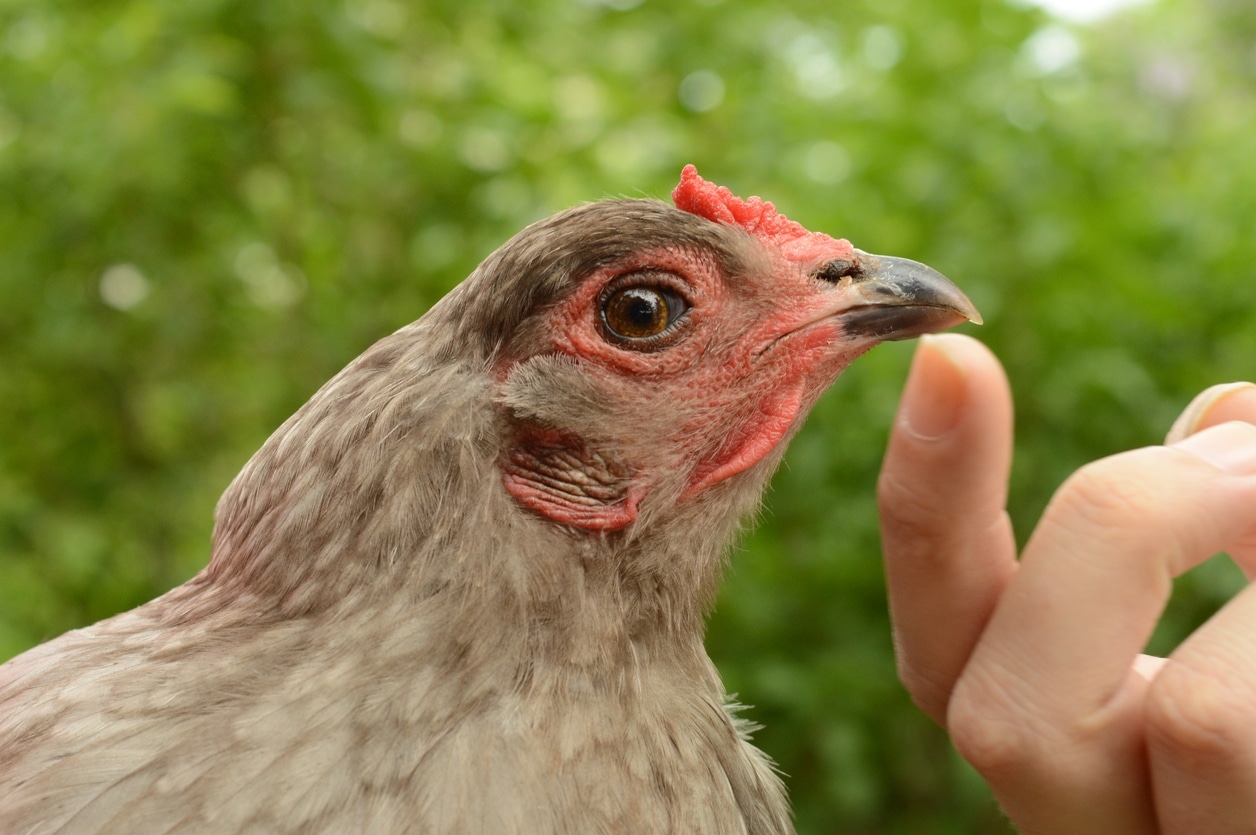“Easter eggs” are more than just a holiday tradition. They could also refer to the eggs from an Easter Egger chicken.
Technically, Easter Eggers are not a recognized chicken breed, but instead, they’re a hybrid. They are sometimes referred to as “Rainbow Layers” too as a reference to their unique variety of eggs. So, let’s take a look at these chickens to find out if they’re the right kind for you.
[toc]
Easter Egger Overview
Before we uncover the details about Easter Eggers, let’s look at an overview of their traits and care requirements.
| Lifespan | 5 – 8 years |
| Weight | 4 – 5 pounds |
| Appearance | Varies |
| Egg Production | 4 eggs per week, over 200 per year |
| Egg Color | Usually blue, olive, or green |
| Good for Beginners? | Yes |
| Minimum Coop Size | 4 square feet per bird |
| Price | $4 – $5 per chick |
What are Easter Eggers Mixed With?
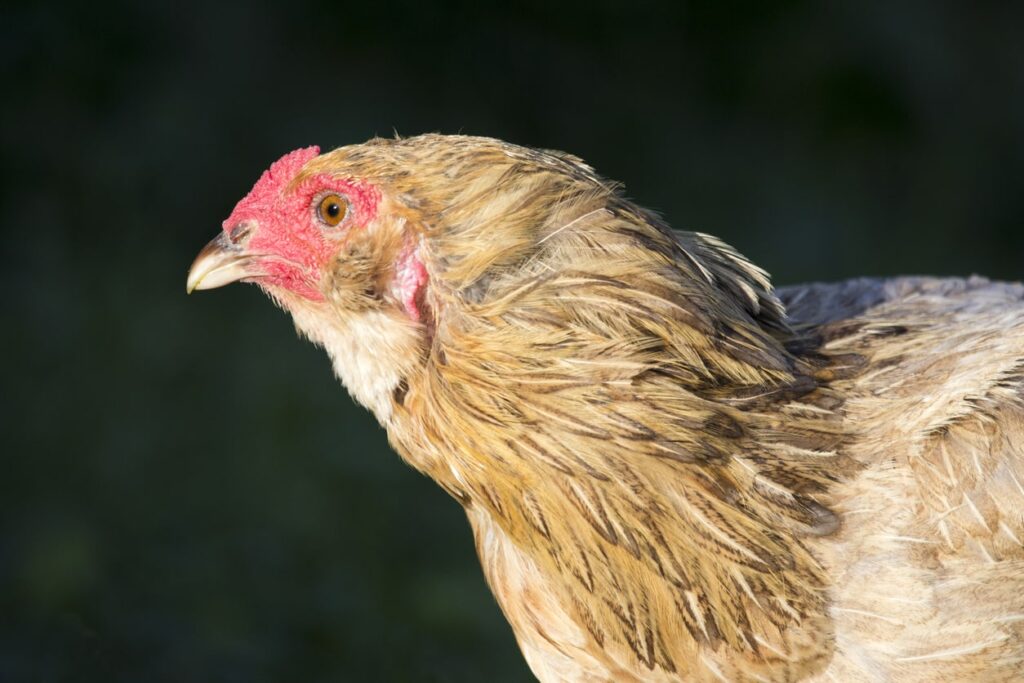
Easter Eggers are a hybrid of two other chicken breeds. It isn’t clear if these parent breeds are always the same, but this hybrid can be defined as any mixed breed chicken carrying a blue egg gene, also known as oocyan.
The Easter Egger chicken is most commonly made by breeding an Araucana and an Ameraucana. So, let’s take a look at the details of the two breeds.
Araucana
Araucana chickens are known for their distinct “ear tufts” on the sides of their heads. However, the ear tuft gene is dangerous for breeding, and breeding two chickens with ear tufts can cause the chicks to die before they hatch.
These chickens originally came from Chile, and their feathers come in a wide range of colors. Yet, they have a dominant gene for blue eggs, which is what fascinates many people.
Ameraucana
Ameraucana chickens were first bred in the United States. Like Araucanas, they have a wide range of feather colors, and they also carry a dominant blue egg gene.
They were bred as a mix between Araucanas and mixed breed chickens to create a breed better suited to breeders’ preferences. They were designed to maintain the blue eggs without the risk of ear tuft breeding.
History of Easter Egger Chickens
Since it’s a mixed breed, the Easter Egger doesn’t have a long history. These birds were created after an Araucana and an Ameraucana were bred together.
Araucanas originated in South American, and they were sometimes referred to as the “Mapuche chicken” after the indigenous tribe that cared for them. The Ameraucana breed was created in the United States during the 1970s when an Araucana chicken was bred with an American breed.
The mix between these two breeds results in chickens of varying appearances and multi-colored eggs. While the Easter Egger isn’t an official breed, they are beloved by many due to their cute appearance and low maintenance care.
Easter Egger Appearance
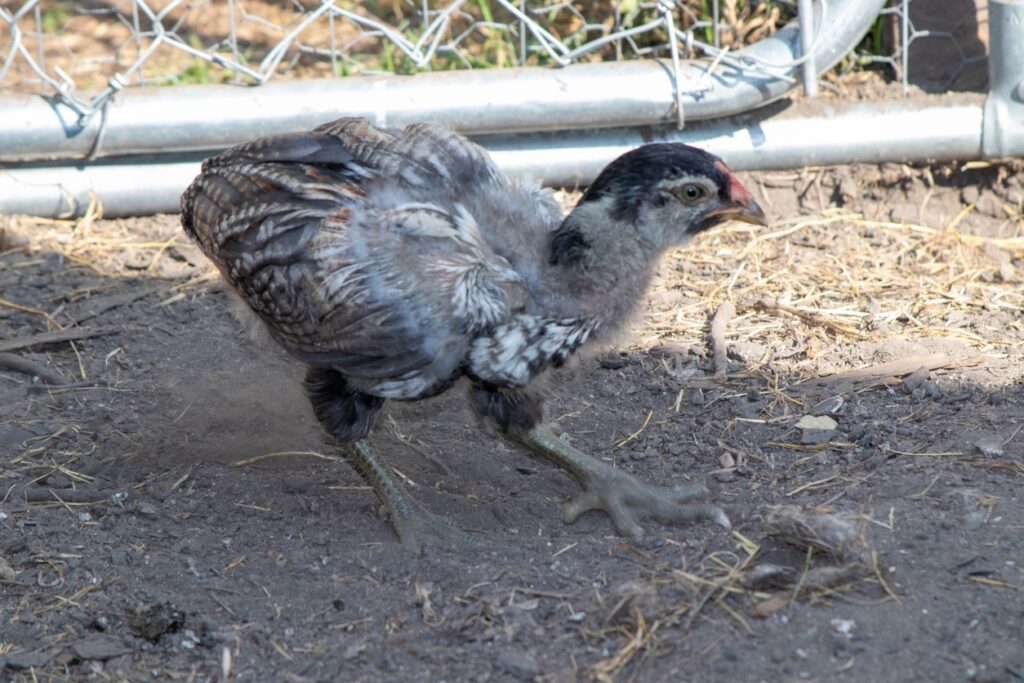
Easter Eggers can be somewhat unpredictable in terms of appearance, but many keepers love this uniqueness. So, here’s what they look like at different stages in their lives.
What Color Eggs Do Easter Eggers Lay?
An Easter Egger egg can vary in color. Each Easter Egger hen will only lay one color of eggs, but if you have multiple hens in your coop, you’re sure to get a variety of egg colors.
The eggs can be blue, green, olive, cream, or even light pink. While not as common, Easter Eggers can also lay duller colors, such as brown eggs. These eggs are medium to large in size, depending on the genetics of the hen.
Easter Egger Chick Appearance
Like the eggs, the chicks’ appearances greatly vary based on what the parents looked like. Some Easter Egger chicks could have unique traits like ear tufts, muffs, beards, or no tail, but those traits aren’t consistent for every chick.
Easter Egger Adult Chicken Colors
An adult Easter Egger chicken can be all over the place in terms of looks. Araucanas are known for their ear tufts and “rumpless” appearance with no tails. So, it’s possible that Easter Eggers will gain these traits, but it’s not guaranteed.
Adults can have any type of comb of any shape and size. A pea comb or single comb are the most common. Their wattles are usually red, but their legs can vary in color. Their feathers could either be plain or patterned. Some common Easter Egger colors include grey, gold, tan, and brown.
Similar to their eggs and chicks, the appearance of your Easter Egger will greatly vary depending on what their parents looked like.
Size and Weight
Easter Eggers are considered a standard sized chicken, but they tend to be on the small size. Hens usually weigh about four pounds while roosters weigh five founds. Yet, it’s possible to find Easter Eggers that are slightly larger.
Breed Standard
Since Easter Eggers are a hybrid instead of an official breed, they don’t have a breed standard. They’re considered “an unconventional chicken” due to their wide range of appearances.
Easter Egger Temperament
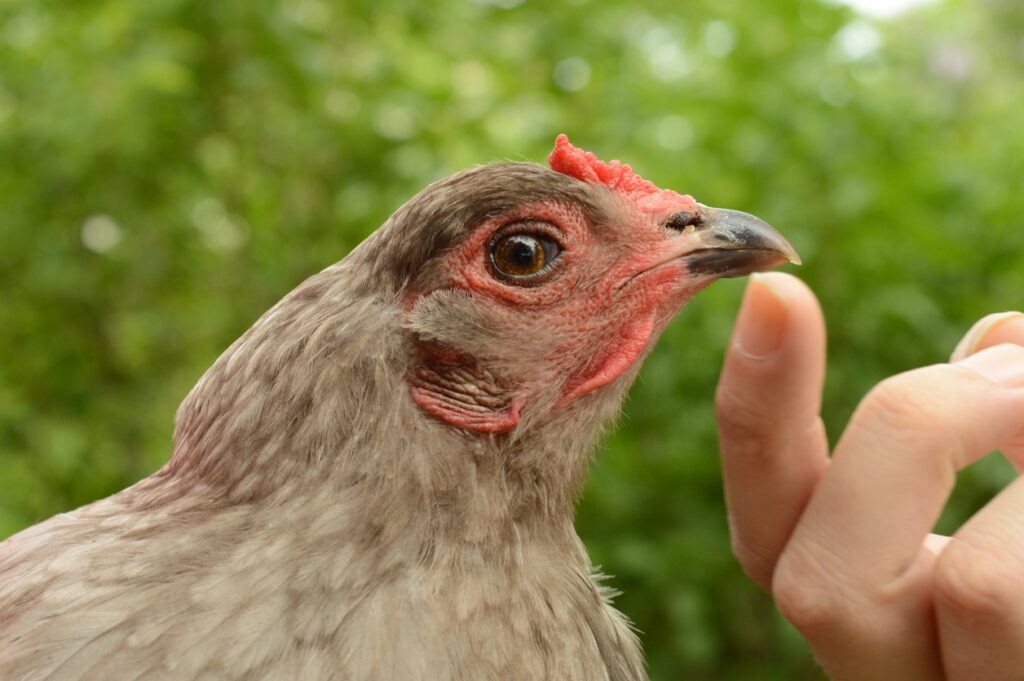
Easter Eggers are known for their friendly personalities and non-aggressive natures. So, they’re great chickens for beginners.
It might take them a little time to get used to their new space, but once they get comfortable, they might even eat out of your hand or sit in your lap. Their friendliness makes them great around children.
Easter Eggers can also be very curious birds, so they might need some chicken toys to keep them entertained.
Broodiness
“Broody” is a motherly instinct seen in hens that causes them to sit on their eggs often to incubate them. Easter Eggers aren’t known to be broody.
These hens devote time to laying colored eggs, but show minimal interest in the eggs and chicks afterward. This can be a positive thing if the keepers are only looking for use eggs for food instead of raising more chickens.
Noise Levels
Easter Egger chickens are generally quiet, so you can keep them in an urban setting without disturbing your neighbors.
The might chatter among themselves quietly, but the only time they’ll raise their voice is to alert others of a predator.
Do Easter Eggers Get Along with Other Animals?
Easter Eggers are easygoing birds who don’t pay much attention to other animals. So, if you’re keeping other animals near them, these chickens won’t go looking for trouble.
Even though they won’t start fights, they might get picked on by more aggressive breeds. So, if you have other types of chickens nearby, make sure they are also gentle and easygoing, such as Cochins or Salmon Faverolles.
Easter Egger Care Requirements
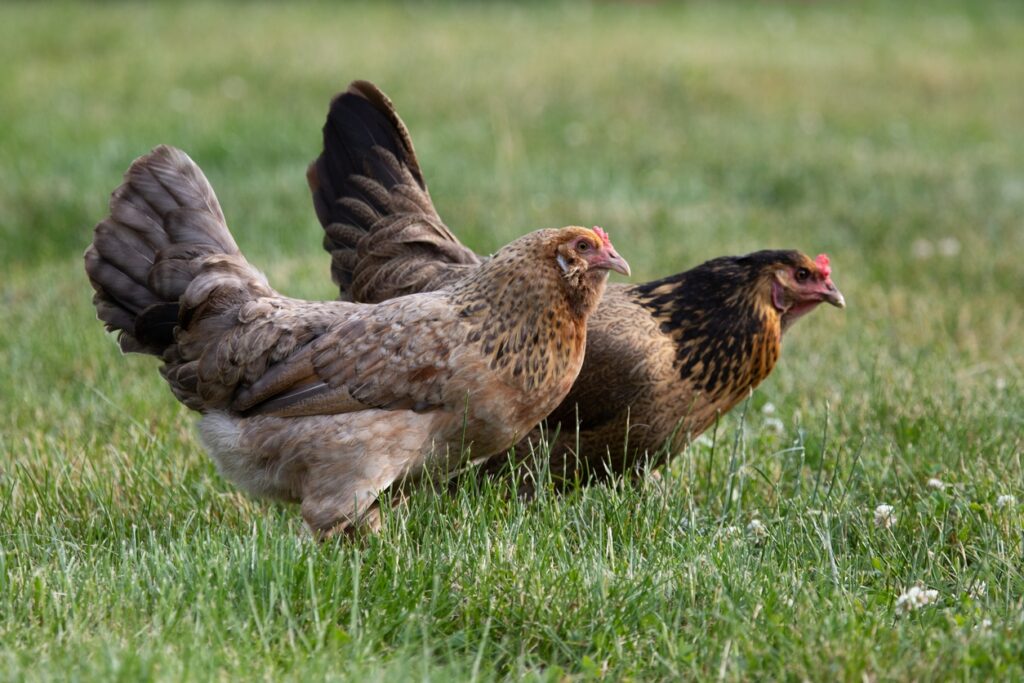
In addition to their easygoing nature, it’s fairly simple to care for an Easter Egger chicken. So, here are some care tips to help get you started.
Diet
Feeding an Easter Egger chicken is very similar to feeding any other breed. Chicks should start off with a diet that has at least 20% protein. Then, at six weeks old, they can thrive off a minimum of 16-18% protein.
At 20 weeks old, you can transition them to an adult formula, which usually consists of 16% protein. Yet, this feed probably isn’t the only food they’ll want. Most chickens like variety, and they’ll explore on their own to find it.
For that reason, it’s a good idea to give your chickens some free-range space. If they have time to explore further, they can find vitamins and nutrients to help them thrive. Free ranging can greatly benefit any chicken’s diet.
In addition to providing food for your Easter Eggers, make sure they always have clean water available.
Habitat Setup
Easter Eggers are highly adjustable. While they like to have some free-range time, they’re also surprisingly tolerant in a confined coop. If possible, try to provide them a balance of the two.
This hybrid is smaller than many chicken breeds, so they don’t need too much space to roam. There should be a minimum of four square feet per chicken, but feel free to give them a little extra space if you’re able.
Each chicken should get about 8 to 10 inches of roosting space. It’s a good idea to put these roosts at varying heights. If you have other chicken breeds in your coop, provide extra roost space to stop them from picking fights with your Easter Eggers.
In your coop, nesting boxes should be about 12 inches by 12 inches. One nesting box for every three chickens is usually a good rule of thumb, but the chickens might all pick a favorite and want to use the same box.
Temperature
These chickens are surprisingly tolerant to different weather conditions. As long as they have enough food, water, and shelter, they’ll thrive no matter the temperature.
During the warmest months, make sure your Easter Eggers have plenty of shade to retreat to. The same goes for cold months since they should have shelter to block out the frigid winds.
Health Concerns
Easter Eggers are healthy chickens, so it’s unlikely that you’ll find any severe health concerns with them. They’re not prone to any common genetic issues. Of course, they can still get the same common diseases as other chickens, so it’s a good idea to take them to the vet and get vaccines as needed.
However, like all chickens, they could get parasites like lice and mites. Chickens with beards and muffs are the most likely to get infected. Luckily, regular feather checks and treatments can keep this under control.
You can also spray the coop with a parasite repellent. Changing their bedding regularly can help keep them healthy too.
It’s also a good idea to take a fecal sample to the vet every six months or so to look for intestinal worms and other internal health problems. Your vet can give you the best advice on how to treat and avoid these issues.
How to Breed Easter Egger Chickens
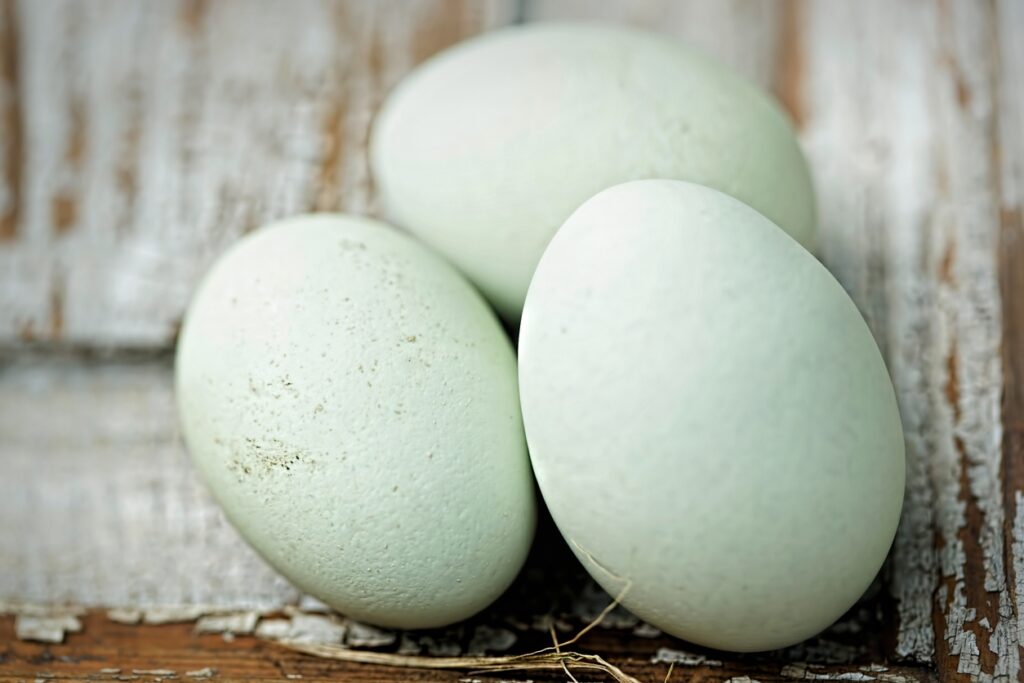
Most keepers don’t use Easter Eggers for breeding, so they only keep hens and not roosters. However, if you want to breed more Easter Egger chickens, there are two main ways to do it.
First of all, you can breed an Araucana and an Ameraucana together since that’s how Easter Eggers were created in the first place. However, you can also breed two Easter Eggers together to get more of them, which is the easier option. So, if that’s the case, you might want to get a healthy Easter Egger rooster.
If you don’t want to handle breeding yourself, you can turn to a reputable breeder. Easter Egger chicks are usually fairly cheap, at around $4 to $5 per bird.
Egg Production
Easter Eggers can lay about four eggs per week, which means they produce over 200 eggs every year. Certain Easter Eggers might even lay far more than that.
While this egg production is about average, one chicken can produce a good amount for a small family. If you’re looking to sell eggs, buying more Easter Eggers will give you lots of delicious eggs per year.
What Causes Blue Chicken Eggs?
Since both of the parent breeds create blue eggs, it’s common that Easter Eggers will too. It took many years of studying chicken DNA to discover why the eggs appear this way though.
The blue coloring is called oocyan, which comes from a liver pigment called oocyanin. These eggs are unique because the coloring not only appears on the exterior of the shell, but on the interior too.
When Easter Eggers lay colored eggs, the oocyanin colors cover the egg first, and then a second pigment can be layered on top of it. That’s how colors like green and olive are created. Not all Easter Egger eggs are a type of blue, but those are certainly the most noticeable colors.
Does Egg Color Affect the Taste?
Easter Egger eggs come in a wide range of colors, but luckily, that doesn’t affect how the eggs taste. All unfertilized eggs from these hybrids can make part of a tasty meal.
Frequently Asked Questions
You can never ask too many questions when trying to find the right chicken for you coop. So, here are a few things that new chicken keepers commonly wonder.
How Long Do Easter Egger Chickens Live?
Most Easter Egger chickens live 5 to 8 years. Many purebred chickens can live closer to 10 years, but hybrid chickens often have shorter lifespan. Their lifespan greatly varies depending on the health of their parents and their current care. Easter Eggers tend to be healthier and live longer than other hybrid chickens.
Can Easter Eggers Lay Purple Eggs?
Unfortunately, Easter Eggers cannot lay purple eggs. Yet, they can lay a variety of other colors, including light blue, sea-foam green, dark green, and pink. There are no known chicken breeds that produce purple eggs.
Does Egg Color Affect a Chicken’s Appearance?
No, the color of your Easter Egger eggs won’t impact the color of the chicks that hatch. Most chickens always lay the same egg color, but Easter Eggers can lay eggs of several colors at the same time. Since Easter Eggers have a variety of possible appearances, the chickens may grow up to look very different from each other even if they had the same egg color.
Is An Easter Egger Chicken Right For You?

Now that you know what to expect with an Easter Egger chicken, it’s time to decide if they’re the right breed for you. They’re easy to care for, and they have calm, friendly personalities. So, if you’re a beginner, they’re great chickens to start with.
Plus, they’re fairly cheap to purchase and they don’t require as much space as most chickens. Yet, you should still take the time to set up an ideal environment with their basic needs before committing to several living creatures.
Many beginners love how unique these chickens are, thanks to their varying appearances and egg colors. However, if you’re looking for a breed that’s more consistent, then you should select an official chicken breed rather than a hybrid.
Overall, Easter Eggers are great for all types of keepers. Plus, it’s hard not to be amazed by their beautiful colored eggs.
